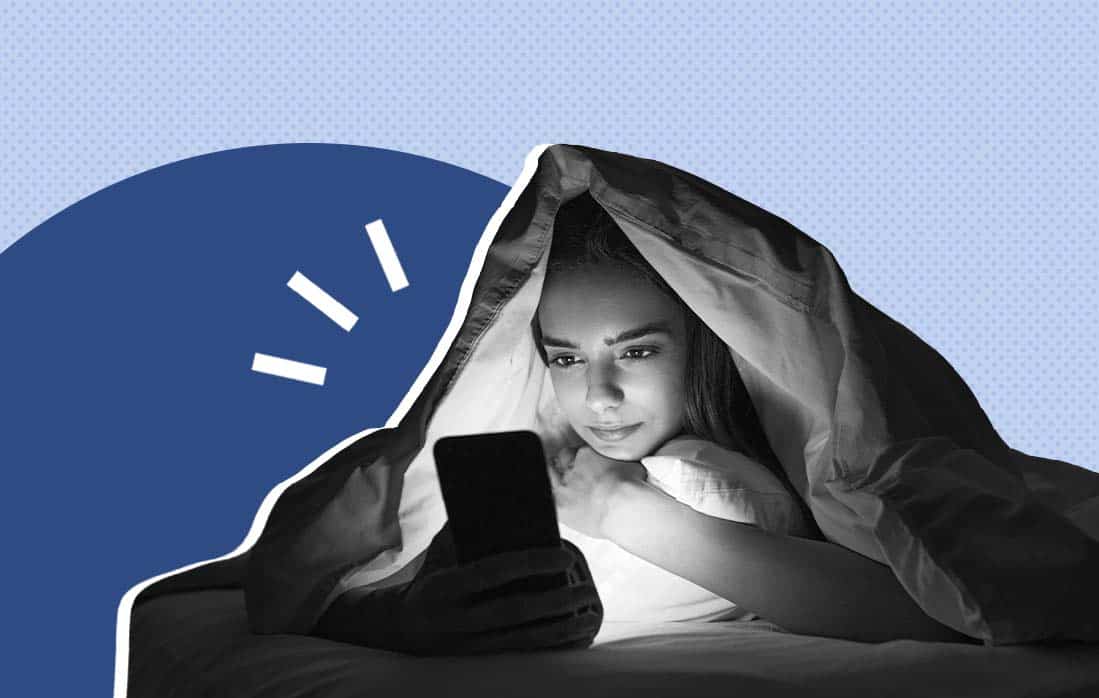Anyone who struggles with sleep has probably found themselves googling ways to get some better shuteye. And while advice can range, there’s one sleep-disruptive culprit you’ll find again and again on your path to better sleep: Blue light.

What Is Blue Light?
Blue light is a color in the visible light spectrum that can be seen by the human eye—it’s one of the shortest, highest-energy wavelengths. Though exposure to blue light can be beneficial during daylight hours—it can help memory and boost awareness, reaction time, and moods—it can be detrimental when exposure is prolonged, particularly in the evening. Blue light exposure can cause:
- Eyestrain
- Headaches
- Fatigue
- Retinal damage with prolonged exposure, which may lead to conditions such as macular degeneration
In addition, some studies suggest that exposure to blue light at night can be linked to several types of cancer, heart disease, obesity and increased risk for depression.
Where Does Blue Light Come From?
Blue light can come from a variety of common sources, including:
- Sun
- Phones
- TV
- Computers and tablets
- Video games
- Fluorescent lights
- LED lights
The Relationship Between Blue Light and Sleep
There’s a reason blue light is on so many no-no lists when it comes to sleep. One poll found that 90% of Americans report using an electronic device within and hour of trying to fall asleep, which doesn’t bode well for their sleep quality—studies show that using interactive devices within an hour before bedtime (phones, laptops, video games, tablets) are associated with difficulty falling asleep and poor sleep quality.
This is likely due to blue light’s effect on our circadian rhythms and melatonin production: Research has shown that blue light can disturb our circadian rhythm—our internal process that regulates sleep—and suppresses our melatonin production, leaving us feeling alert instead of tired and decreasing REM sleep.

How to Minimize the Effects of Blue Light Exposure
Though blue light is unavoidable in everyday life, there are ways to prevent it’s negative side effects, including:
- Wear anti-reflective or yellow-tinted computer glasses
- Using screen filters such as “night mode” to reduce harsh lighting. Or, put physical blue-light filters on your computer, phone and tablet screens to reduce the amount of blue light exposure you get from screens
- Blue light therapy
- Improved sleep hygiene and sleep environment (we recommend a consistent schedule and a cool, dark sleeping environment)
Though these tips can help mitigate the effects of blue light, the best thing you can do is reduce screen time before bed—we recommend trying to steer clear of blue light sources at least an hour before you try to go to bed.
FAQS
Is blue light a myth?
No, blue light is not a myth. It is a color on the visible light spectrum that we’re able to see—though the sun emits blue light, so do our phones, televisions, tablets, and other screens. Prolonged exposure to blue light can have some negative side effects, such as eye strain and headaches.
Is blue light bad for your skin?
Yes, blue light can damage your skin by causing premature aging, wrinkles, and a loss of firmness. Cutting down on screen time, using blue light screen filters or “nighttime mode” can help limit damage and exposure.
Last Word From Sleepopolis
Blue light isn’t all bad, and even if it was, It’s not realistic to avoid blue light altogether. However, reducing exposure around bedtime can make a significant difference in your sleep quality.


























